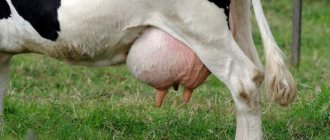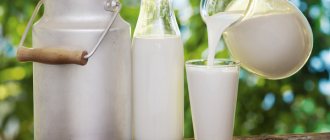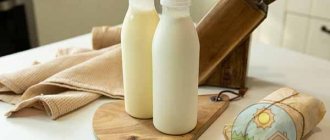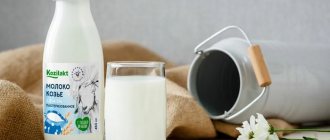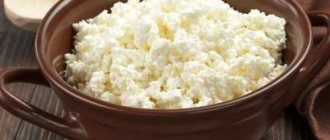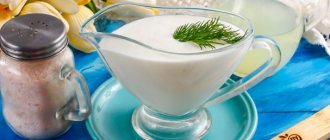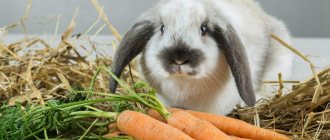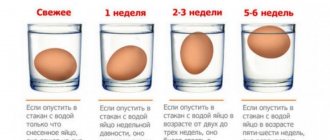Milk separation
Mechanical processing is an integral part of the complex technological cycle of milk processing. It consists of a mechanical effect on milk in order to separate it into fractions (cream and skim milk), increasing the homogeneity and homogeneity of the fat phase in milk before and after separation, as well as preparing to obtain the same ratio of the mass fraction of fat and dry substances in raw materials and finished product. One of the technological operations of mechanical processing of milk is milk separation
Milk separation
They are used to separate milk into cream and skim milk, as well as to clean it from mechanical and natural impurities. The milk separation process is the mechanical separation of milk into fractions under the influence of centrifugal force.
Separation occurs due to differences in the density of milk fractions: the density of the dispersed phase (fat) is less than that of the dispersion medium (milk plasma).
Milk separation is carried out using special equipment - separators. Depending on their purpose, they are divided into milk separators and cream separators.
In production, milk separation is carried out at a temperature of 35-45°C, but sometimes high-temperature conditions are also used. In this case, the milk is heated to a temperature of 60-85°C.
Increasing the separation temperature above 45 °C is impractical, since the degree of milk skimming increases slightly, and high energy costs are required.
Increasing the rotation speed of the separator drum and the average radius of the working part of the plate has a positive effect on cream separation: the larger the inner diameter of the drum, the more intense the degreasing. These factors were used to develop new separator designs.
The least amount of fat lost into skim milk occurs when fresh milk, which has the lowest acidity and has not been subjected to either thermal (heating, cooling) or mechanical processing, is separated.
When separating cold milk using a separator of a conventional design, high defatting efficiency is possible only with a significant reduction in productivity. Thus, at a milk temperature of 5°C, the separator performance should be reduced by 50%, at 10°C – by 30%, at 15°C – by 20%. As the temperature decreases, the fat content of the cream increases. This is due to the fact that the viscosity of cold cream is higher, so it flows out of the separator more slowly and is exposed to centrifugal force longer.
An increase in the fat content of cream is also achieved by reducing the supply of heated milk to the separator, due to a longer exposure to centrifugal force on the milk.
Along with the indicated (optimal) temperature regime, it is possible to use higher separation temperatures in the range of 60-85°C. Studies have shown that at separation temperatures above 40°C, the fragmentation of fat globules increases, foaming in cream and skim milk increases, and partial denaturation of whey proteins and fat globule shell proteins occurs. These processes are accompanied by the accumulation of large amounts of separator mucus. As a result, more fat goes into the skim milk and buttermilk when churning the cream into butter, more separator mucus accumulates, and the separator has to be stopped and washed more often. At the same time, increasing the temperature makes it possible to slightly increase the productivity of the separator and simplify the technological scheme, since cream and skim milk are pasteurized.
High-temperature separation is advisable for obtaining high-fat cream (HFC) with a fat mass fraction of up to 82%. For these purposes, cream of 30-40% fat content is separated. The resulting cream and skim milk can be used in the future without pasteurization. However, with such separation, the fragmentation of fat globules increases, and the foaming of milk, cream and skim milk (SMB) sharply increases. As a result, fat loss increases due to an increase in the mass fraction of fat in skim milk and buttermilk during the production of butter, as well as loss of dry substances during the production of protein products (cottage cheese, etc.) due to the irreversible coagulation of protein substances contained in the foam. Foam in milk, skim milk and cream has a negative effect on their further cooking. A large volume of foam in the product reduces its thermal conductivity, which reduces the efficiency of heating equipment. Foam warms up worse than the bulk of the product. The difference in the heating temperature of the foam and the product can be up to 10-15 ° C and lead to more microorganisms, including pathogenic forms, remaining in the foamed pasteurized product. Foamed skim milk is more difficult to cool to fermentation temperature. Therefore, it is not recommended to separate milk at elevated temperatures.
Before separation, it is undesirable to subject milk to significant mechanical stress - mixing, pumping, shaking, as this causes crushing of fat globules and an increase in fat loss into skim milk. When milk is stored for a long time (up to 20 hours) on the farm in a refrigerated state, acidity, viscosity and density increase, which reduces the degree of milk skimming by 12-17%.
During the separation process, mechanical inclusions are released from milk. They are deposited on the inner surface of the drum, gradually filling the mud and then the inter-plate space. In this case, the passage of skim milk to the periphery is difficult; it rises between the plates and partially exits through the cream channel, sharply reducing its fat content. Therefore, for separation it is necessary to use pre-cleaned milk with an acidity of no higher than 20°T. And when separating contaminated milk with manual unloading of sediment from the mud space, it is necessary to stop the separator after 1-1.5 hours and wash or replace the dirty drum with a clean one.
Source
Separator operating principle
Manual and electric cream separators produced by industry are based on the general principle of separating the suspension in a disc drum. This is the main unit; it consists of a package of separating plates placed on a glass and closed with a lid on top. Perforated plates are placed in a certain order, creating 6 holes for milk to come out. For cream, the outlet is closer to the wall of the glass. The product is poured into the receiving bowl of the milk separator. Through an adjustable plug valve, milk flows into the float chamber, and from there it passes down the central glass of the drum.
The milk in the plate drum is separated on each plate by centrifugal forces. Through common channels, the return rises into the receiving chamber and is discharged through the horn into the container. The cream goes into another chamber. Random impurities get into the mud trap. This is how a household milk separator works, regardless of the type of drive. Methods of correct operation and the sequence of operations are reflected in the operating instructions for the separator.
It is mandatory for all household separators to thoroughly wash and dry all parts after milk distillation.
Surprisingly, if the plates are not clean enough or are not put on in the proper order, the machine will not work and milk will flow out of all the cracks.
SEPARATION AND NORMALIZATION OF MILK
Separation of milk is the division of milk into two fractions of different densities: high-fat (cream) and low-fat (skimmed milk). Separation is carried out under the action of centrifugal force in the separator drum. Milk, distributed in the drum between plates in the form of thin layers, moves at low speed, which creates favorable conditions for the most complete separation of the high-fat fraction (fat globules) in a short time. The process of milk separation obeys Stokes' law: 9.60, 2D2 P - Pi, where v is the rate of release of fat globules, cm/s; R—average radius of the working part of the separator plate, cm; r—radius of the fat globule, cm; n is the rotation frequency of the separator drum, s-1; р, р2 — density of plasma and fat, kg/m3; \i—dynamic viscosity, Pa • s.
In accordance with this law, the rate of release of the fat fraction from milk is directly dependent on the size of the fat globules, the density of the milk plasma, the dimensions and rotation speed of the drum, and inversely proportional to the viscosity of the milk. With an increase in the size of fat globules and the density of milk plasma, the process of separation and separation of cream accelerates. The higher the content of nonfat solids in milk, the higher the density of plasma and whole milk.
Consequently, milk of higher density will have better conditions for separation. An increase in milk viscosity leads to a decrease in the rate of release of the fat fraction. In addition, the acidity and temperature of the milk have a significant impact on separation.
An increase in the acidity of milk leads to a change in the colloidal state of its proteins, sometimes accompanied by the loss of flakes; As a result, viscosity increases, which makes separation difficult. Increasing the temperature of milk helps to reduce its viscosity and the transition of fat into a liquid state, which improves separation. The optimal separation temperature is 35-45°C. Heating the milk to this temperature ensures good skimming.
Along with separation at 35-45 °C, high-temperature separation at 60-85 °C is sometimes used. As the separation temperature increases, the productivity of the separator and the quality of degreasing increase. However, high-temperature separation also has a number of disadvantages: an increase in the fat content in skim milk due to partial loss of albumin, which prevents the release of fat; strong foaming of cream and skim milk; increased fragmentation of fat globules.
Much attention is paid to separation at low temperatures, the so-called cold milk separation. However, separation at low temperatures using conventional separators leads to a decrease in their productivity by almost half due to an increase in viscosity and partial crystallization of fat.
The separation process in the separator is carried out in the following sequence. Whole milk flows through the central tube into the plate holder, from which the upper part of the set of plates rises between them through channels formed by the holes in the plates and spreads. In the inter-plate space, fat globules, as a lighter fraction of milk, move towards the center of the drum, then along the gap between the edge of the plate and the plate holder they rise up and enter the cream chamber. Then, under pressure, the cream enters the pipe on which a cream quantity meter (rotameter) and a control valve are installed. Skim milk, as a heavier fraction, is directed to the periphery of the drum (into the mud space), rises up and enters the pipe on which a pressure gauge and control valve (faucet) are installed.
The control valve is designed to regulate the fat content of the resulting cream, which varies depending on the amount of cream and skim milk. With a constant amount and mass fraction of fat in the incoming milk, a decrease in the amount of outgoing cream leads to an increase in the mass fraction of fat in it and, conversely, an increase in the amount of cream reduces the mass fraction of fat in it.
Based on the ratio of the masses of cream and skim milk, you can find the required fat content of the cream. Having determined by calculation the ratio between the masses of cream and skim milk, this ratio is established using an adjusting device. Milk is supplied to dairy enterprises with different contents of fat and nonfat milk solids (SMR), and in the finished product fat and SMR must be in a certain quantity or ratio. In this regard, normalization of raw materials is necessary.
Normalization is the regulation of the composition of raw materials to obtain a finished product that meets the requirements of the standard. When normalizing source (whole) milk by fat, there can be two options: there is more fat in whole milk than required in production, and there is less fat in whole milk than required. In the first option, the fat is partially removed by separation or skim milk is added to the original milk. In the second option, to increase the fat content of the original milk, cream is added to it. The masses of cream and skim milk required to be added to the original milk are calculated using material balance equations, which can be prepared for any component of the milk.
One of the simplest methods of normalization for fat is normalization by mixing in a container calculated quantities of milk to be normalized and a normalizing component (cream or skim milk). The normalizing component is added while thoroughly mixing the mixture in the container. Normalization by mixing can be carried out in a flow, when a continuous stream of milk being normalized is mixed in a certain ratio with the flow of the normalizing product.
Source
Possible problems and ways to solve them
Problems related to technical side and equipment:
- Problem #1: Protein flakes quickly fill the drum's dirt container. This is due to the fact that milk with high acidity is involved in the separation.
Consequences: Reduced milk separation rate.Solution: Regular manual cleaning of the separator.
- Problem No. 2: An increase in lactic acid bacteria, which occurs due to an increase in temperature during separation to 45°C.
Consequences: Rapid deterioration of the product.Solution: Use milk that is heated to 20-30°C.
- Problem #3: Reduced process efficiency due to increasing the distance between the drum plates.
Solution: Increasing the number of these trays and regular operation of the separator.Reasons why the separator does not separate cream from milk:
- You are adding too much milk. Solving this problem is quite simple: you can regulate the feed using special flags.
Insufficient separator speed. To avoid this, accelerate the rotor of the device more strongly.
- You are pouring too hot milk into the separator. The milk temperature should not exceed 40°C.
- Error while assembling the device. You have put something in the wrong place. To solve this problem, you can contact a professional or use the instructions.
- Gaps between device parts. Check their presence carefully when assembling the device.
Industrial production technology
In production, milk separation occurs at a temperature of 35-45°C.
The process itself includes several stages:
In production, one should be guided by the following principle: before separation, it is undesirable to subject milk to significant mechanical stress - mixing, pumping, shaking, since this causes crushing of fat globules and an increase in fat loss into skim milk.
Factors influencing the process
There are several factors that affect the quality of separation:
- Liquid density. The higher it is, the lower the quality of the resulting product. The degree of thickness can be reduced by heating the milk.
- Fat content of milk. The larger it is, the slower the separation process occurs. In order to increase its speed, it is necessary to increase the number of cleaning plates that are located in the device itself.
- Incorrect technical processes. They also affect the separation rate, slowing it down. This happens because rough pumps deform fat particles during industrial pumping of milk. When the particles are round in shape and large in size, separation occurs much faster.
The temperature of the initial product is the main criterion that affects the quality of the final result. The optimal mode for household separators is 35-45°C.
Cow's
To carry out the procedure, it is necessary to take into account a number of indicators - acidity, fat content, what temperature the product should be so that it can be separated, whether it is permissible to use fresh milk and other nuances.
It is best to separate fresh fresh milk, as it is better skimmed.
But this must be done during milking (that is, immediately). It is also possible to pass fresh milk through a separator after short-term storage (1.5-2 hours).
Problems using the device
Each device has an instruction manual that must be carefully studied and followed. A possible cause of problems may be design features that were not taken into account during assembly. Some problems can be summarized and basic recommendations for correction can be given. However, you should always rely on the model used and information from the manufacturer.
The separated product does not thicken
- The reason may be excessively hot milk, in which case it needs to be cooled to the temperature of fresh milk, about 40 degrees.
- You also need to get rid of dirt from the drum. It should be disassembled, cleaned and rinsed from sediment.
- It would be a good idea to check the position of the adjusting screw. If it is screwed in too much, you need to turn it 1-1.5 turns.
- Thickness will appear after prolonged exposure to the cold. In cases where waiting time is limited, you can use a mixer. The main thing is not to overdo it and make butter.
Why does he drive so fat?
First of all, you need to try changing the position of the regulator. It can also be caused by milk that is too cold. The optimal temperature of the raw material is 35-45 C. The tap is not fully open. The float is not in place.
For what reason does it not separate from milk or does it poorly?
The most common reasons are:
How to properly separate at home?
Goat
The separation of goat and cow milk is slightly different.
Let's look at this process first for the goat: Separation is complete. Now let's move on to the second stage:
To make the sour cream tastier, do not fill the jar completely (about 4/5 of the total volume).
Cow
Find out how cow's milk is passed through a separator.
To obtain cream by separating cow's milk, you should follow the following plan:
You can adjust the fat content of the cream using the drain screw. To increase the fat content of the cream, turn the screw to the right; to decrease it, turn it to the left.
All parts in the separator must fit tightly to each other. There should be no cracks or gaps between them.
How to choose equipment?
- If you have several cows/goats and you decide to open a small business producing fermented milk products, then a machine with a capacity of at least 100 l/hour is suitable for you. For example, “Motor SICH SCM-100-19” or “Falcon MS 100 metal”.
- If you are a novice farmer or are going to use the device at home, then the best option for you would be a device with a capacity of 80 l/hour. For example, “Farmer ES-01 80 liters” or “Penzmash Salyut ESB02-04 80 liters”.
- If you want to make cream or butter during your summer holiday in the country, i.e. If you do not do this regularly, but seasonally, then a separator of 50 l/hour will be enough for you. Such as “Ural M” and “Hydrounit Beryozka”.
- If you are counting on a full-fledged farm, choose equipment with a productivity of 500 l/h. Such as "Motor SICH 500".
Attention!
The separator should be installed on the edge of a flat surface in a heated room.
How to distinguish from whole?
There are several universal parameters on how to distinguish whether milk has been separated in front of you or whole:
The main difference between skim milk using a separator and whole milk, which cannot be seen with the naked eye, is the reduced fat content. This property allows the use of milk during diets. In addition, it is rich in various minerals (zinc, iron, manganese) and vitamins such as A, B (folic acid, thiamine, pantothenic acid), C, D and others.
Knowing all these features, you can easily understand which milk has undergone mechanical processing and which has not.
How was the procedure carried out before and now?
Some time ago, the separation process was as follows: milk was placed in a cold place, where the heavier part (water) went to the bottom, and the cream remained on top. This method was called gravitational. Its disadvantages were very obvious:
- Milk was taking up space in the refrigerator.
- It could turn sour before being separated.
- The quality of the cream with this separation was low.
Today, mechanical processing is carried out on special equipment, which is called separators. There are milk separators and cream separators.
A little about the thickness of cream
Normal cream thickness ranges between 24 and 28% fat.
Due to the fact that the percentage of fat in the milk of Russian cows is on average about 4%, you need to set the butter screw to 15%.
Now you know all the secrets of high-quality milk separation. Follow all the principles that were described in the article and then you will be able to enjoy various types of fermented milk products without causing harm to your health.
Source
What is it and what is it for?
Milk separation is an important stage of processing, during which the milk is separated into cream and a skim part (skim). This process not only extends the shelf life, allows you to obtain different types of fermented milk foods, but also contributes to the mechanical purification of this natural product from various impurities.
DIY milk separator
Milk contains many useful substances, vitamins and minerals. The benefits of milk are evidenced by the fact that by drinking 0.5 liters of milk a day, the body receives all the nutrients it needs. True, this applies to a greater extent to fresh milk; sterilized milk has significantly fewer beneficial properties.
Milk contains lactose, which is necessary for the functioning of the heart, liver, and kidneys. The main protein in milk, casein, contains the amino acid methionine, which is also beneficial for the liver and kidneys. Do-it-yourself milk separator However, some people do not have the lactase enzyme in their gastrointestinal tract, which breaks down lactose (milk sugar). Such people cannot tolerate milk, but can benefit from fermented milk products. Lactic acid bacteria suppress the activity of intestinal microflora and thereby reduce the adverse effects of lactose.
Milk contains beneficial vitamins. Vitamin A, which is necessary for the growth of a child and is also essential for maintaining vision. Vitamin B1 (thiamine), necessary for the absorption of sugar.
The body receives the calcium it needs from milk and dairy products. After all, calcium tends to be washed out of bones with age and the bones become fragile. Calcium is necessary both for children’s bodies to form the skeleton, and for older people to prevent osteoporosis. And lactose contained in milk helps the body better absorb calcium.
The beneficial properties of milk will be enhanced if you combine milk intake with vitamin D to enhance the absorption of calcium in the intestines. Fish, fish oil, and caviar are rich in vitamin D.
Fresh milk has bactericidal properties only for 3 - 4 hours after milking. DIY milk separator Then microorganisms and bacteria begin to multiply in it. Raw milk must be boiled before consumption, even if you buy it from reputable places.
Boiling kills bacteria and most spores.
Sterilization kills all bacteria and their spores. True, during sterilization (heating to 125 - 145 degrees) vitamin C and useful proteins - albumin and globulin - are destroyed. But such a product can be stored for a long time.
Pasteurization of milk - heating to 74 - 76 degrees is the most optimal way to process the product; during pasteurization, most vitamins are preserved. but the shelf life of pasteurized milk is much shorter: at a temperature of 0 to 6 degrees, the shelf life is no more than 5 days. It is not recommended to boil pasteurized milk.
The beneficial properties of milk include its beneficial effect on the gastric mucosa. Milk is especially useful for gastritis (goat milk is most useful). Do-it-yourself milk separator Milk is also useful for sleep disorders. Drink milk with honey before bed, it is very calming.
In general, milk with honey has a whole range of healing properties, strengthens the immune system, and increases the body’s resistance.
Drink milk in small sips, as milk can curdle in the stomach into hard-to-digest clumps. In case of food poisoning, on the contrary, drink the milk in one gulp, then the toxic products will come out faster.
Baked goods with a high sugar content will turn a more uniform brown color if you add powdered sugar to the dough instead of granulated sugar.
Benefits of low-fat dairy products
Low-fat foods have a low calorie content due to a minimum of fat, which has a positive effect on the state of the cardiovascular system - low-fat foods do not increase the level of bad cholesterol in the blood, unlike, for example, butter or full-fat sour cream.
In addition, low-fat dairy products help you lose weight. There is probably not a single diet aimed at weight loss that does not include low-fat dairy products. Many diets that give quick results are based on skim milk.
When organizing fasting days, nutritionists pay attention specifically to low-fat fermented milk products: kefir, cottage cheese, yogurt. Weekly use of such days helps not only to keep weight in check, but also to get rid of excess weight with minimal effort.
This, according to advertising, is the main advantage of low-fat dairy products. In addition, low-fat foods provide lightness, improve digestion, and normalize lipid (fat) metabolism in the body. Isn't this a reason to switch to low-fat products, completely abandoning fatty cottage cheese and butter?
However, practice shows that consuming low-fat foods is not so simple. The United States, where there is a cult of low-fat foods and where most skim milk is produced, remains among the world leaders in the number of people suffering from obesity.
Recently, the absolute benefits of low-fat dairy products have been called into question. Studies have appeared that not only question the postulate about the benefits of low-fat dairy products, but also directly link deterioration in health with regular consumption of low-fat products.
